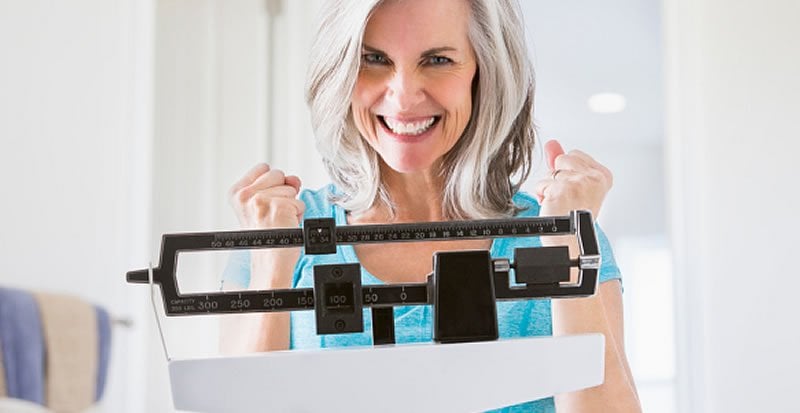10 Tips For Breaking Through a Weight-Loss Plateau
You’re exercising, you’re on the Pritikin Eating Plan, and you’ve lost a bunch of weight over the last few months, but now you’ve plateaued. What happened? What’s the solution? Get our top 10 tips for breaking through a weight-loss plateau. Tip No. 1 is: Fill up on water-rich, fiber-rich foods.

The really good news is there’s plenty you can do to break through your weight-loss plateau.
“First of all,” advises Kimberly Gomer, Director of Nutrition at the Pritikin Longevity Center® & Spa, “it’s vital to remember one basic rule. Weight loss happens when we take in fewer calories than we burn. In other words, our calorie ‘input’ is lower than our calorie ‘output.’
So you’ve got to make a change. You can’t expect that you’re going to somehow magically break through. “The only way to break through your weight-loss plateau and lose more body fat is to cut calorie intake further and/or burn more calories through exercise,” advises Gomer.
Easier said than done, we know. Especially cutting more calories. The key question is: How do you cut calorie intake further without feeling chronically hungry?
Perils of Chronic Hunger
“Few people can live with chronic hunger for long,” states Gomer. All too soon, your brain starts taking you places you don’t want to go – a U-turn into the drive-through lane at Taco Bell, a mad dash to the cookie aisle at the store. Oh, how quickly 1,000 calories of Oreos can go down, especially if you’ve been starving yourself.
To break free of temptation – and break through weight-loss plateaus – you’ve got to keep your mind off food. “And the best way to keep your mind off food is to keep hunger at bay,” advises Gomer. Sure, you’ve got to eat calories to feel full, but you don’t have to eat a lot of calories. The right types of foods can curb appetite and calorie intake.
Satiety = Success
Your secret to success? Get as much satiety as you can for every calorie you eat.
Satiety is the flip side of hunger. The more satisfied, or satiated, you feel after eating a meal or snack, the less hunger you feel. Without hunger nagging away at you, it’s easier to reduce your overall daily calorie consumption, lose weight, and keep it off.
Satiety is also a measure of how long it takes for you to become hungry after you’ve eaten. Does your meal fill you up for one hour? Two hours? Three? The longer it “sticks to your ribs,” the more satiety that meal has.
Interestingly, you don’t need a higher calorie intake to get a higher level of satiety. Certainly, if you ate an eight-ounce can of nuts (about 1,400 calories) or a pound of Oreos (2,200 calories), you’d feel full – and you probably wouldn’t need to eat again for a few hours. But you can achieve the same level of satiety on a lot fewer calories.

Learn More About Pritikin
To choose foods that give you the most satiety on the fewest number of calories – and help you break through your weight-loss plateau – follow these 10 tips:
Getting Past A Weight-Loss Plateau
In this 22-minute video, you’ll learn food and fitness tips that have helped thousands at Pritikin bust through stubborn weight-loss plateaus. Get the Tips »
All-Inclusive Weight-Loss Vacation
Over the last four decades, thousands worldwide have broken through weight-loss plateaus at the Pritikin Center. Give yourself the best chance for success. Learn More »
Ask The Experts: How To Beat A Weight-Loss Plateau
Got a scale that won’t budge? Here’s life-changing advice from our faculty, plus a 12-point checklist. How do you rate? Get Advice »